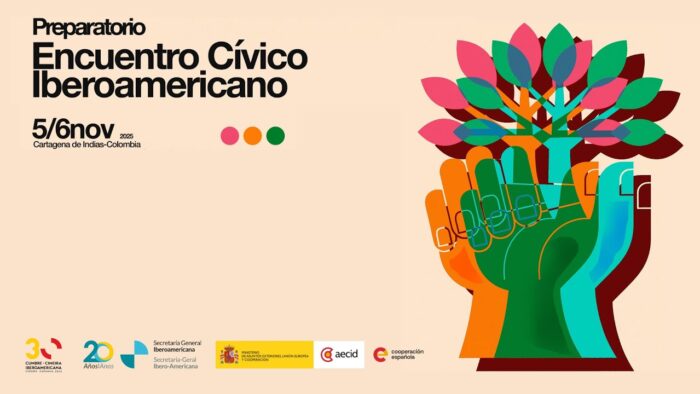Organization: UN Children’s Fund
Country: Brazil
Closing date: 26 Jul 2017
If you are a committed, creative professional and are passionate about making a lasting difference for children, the world’s leading children’s rights organization would like to hear from you.
For 70 years, UNICEF has been working on the ground in 190 countries and territories to promote children’s survival, protection and development. The world’s largest provider of vaccines for developing countries, UNICEF supports child health and nutrition, good water and sanitation, quality basic education for all boys and girls, and the protection of children from violence, exploitation, and AIDS. UNICEF is funded entirely by the voluntary contributions of individuals, businesses, foundations and governments.
Purpose of the Position
Under the overall coordination of the Chief, Social Policy, Monitoring and Evaluation, the Public Budget Specialist is accountable for the accomplishment of key end-results by providing professional expertise and assistance in:
Leveraging greater, more effective and equitable domestic public investments in children, in order to ensure results in the areas of the Country Programme.
Improving technical expertise, knowledge management and staff capacity in the area of (Public Finance for Children) (PF4C), in order to improve the enabling environment and remove Public Financial Management (PFM)-related bottlenecks and barriers to deliver at-scale, equitable and sustainable results for children.
Liaising with public sector partners, providing evidence and advocating for equity-focused public budgeting and investment in children.
Liaising with regional social policy advisors and selected country offices, as well as networking with subject experts externally.
Key Accountabilities and Duties & Tasks
Summary of key functions/accountabilities:
Within the delegated authority and under the given organizational set-up, the incumbent may be assigned the primarily, shared, or contributory accountabilities for all or part of the following areas of major duties and key end-results.
1. Technical guidance and support on strategic, priority PF4C initiatives:
Provide technical guidance and inputs to the Country Office on budget advocacy/PFM-related engagements for investing in children more broadly, with a focus on integrating sector-based efforts within social policy efforts aimed at influencing overall budget processes and actors to achieve UNICEF program results.
Keep abreast of and/or develop new methodologies and tools to support equity-based PF4C programming as part of the Country Programme implementation, specifically through financial tracking (top down), financial flow blockage diagnostics (bottom up), and efficiency monitoring tools and applications to improve country-level and subnational prioritization and financial governance.
Liaise with the public sector and other partners to support improvements of their public budgeting analyses, methodologies, tools and practices, with a view to optimizing investment in children.
Document experiences and analyses of public budgeting and investment for children at national and subnational levels.
Work with partner UN Agencies on joint efforts to address the theme.
2.Knowledge management:
Create and foster sector-specific learning on public financing for children.
Organize webinars and other learning activities on demand to facilitate peer-based learning on public financing for children across sectors.
Participate and contribute to the global PF4C Community of Practice.
Keep abreast of development financing trends and draft issues briefs on implications for investing in children.
3.Research and development:
Contribute to partners’ discussions and research on strategic financing issues, such as results-based financing, and leveraging private sector investments with public financial incentives or partnership approaches.
Develop models for UNICEF’s support to public budgeting and investment analysis and implementation at country and subnational levels.
Key Expected Results
1. Data and evidence on public budgeting and investment for children in Brazil is collected and analyzed at national and subnational levels, providing a basis for advocacy and other programmatic efforts.
2. UNICEF Brazil produces research and documentation of concepts and practices in public budgeting and investment for children.
3. UNICEF Brazil enjoys a position of dialogue with the public and private sectors, at national and subnational levels, providing evidence to support decision-making and programming.
4. Systems and tools are in place to measure and document evidence related to national and subnational budgeting and investment for children. The context and situation of public budgeting and financing for children in Brazil are adequately documented and reported to the UNICEF Regional Office and Headquarters.
5. Capacities in the area of public budgeting and investment for children are developed at national and subnational levels, in order to improve decision-making, programming and implementation.
6. Joint efforts with UN partner agencies related to budgeting and investment for children achieve expected results.
Qualifications of Successful Candidate
Education
– Advanced University degree (Master’s degree or equivalent) Economics, Public Finance, Public Policy, Public Administration or a related discipline is required.
Experience
– Minimum of (5) five years of progressively responsible work experience in in applications and advisory related to Public Financial Management and sector financing, in the applied, national and international social development settings.
– Familiarity with UNICEF programming and experience working within UNICEF field offices is preferred.
– Hands-on experience with sector financing issues is an advantage.
– Working experience in the region is an asset.
Language
– Fluency in Portuguese and English is required. Knowledge of an additional UN Language (Arabic, Chinese, Russian, and Spanish) is considered an asset.
Competencies of Successful Candidate
Core Values
Commitment
Diversity and Inclusion
Integrity
Core competencies
Communication [ II ]
Working with People[ II ]
Drive for Results [II]
Functional Competencies
• Formulating Strategies and Concepts [ II ]
• Analyzing [ II ]
• Applying Technical Expertise [ II ]
• Planning and Organizing [ III ]
•Leading and Supervising [ II ]
To view our competency framework, please click here.
In relation, please note that all candidates who wish to apply to this Vacancy Announcement are requested to prepare and submit their respected UNICEF applications in English language. *Only shortlisted candidates will be notified.
UNICEF is committed to diversity and inclusion within its workforce and encourages qualified female and male candidates from all religious and ethnic backgrounds, representing the diversity of Brazil, such as black and indigenous people, to apply to become a part of our organization. Candidates will be treated equally regardless of gender, sexual orientation, special needs, social and HIV/aids status. UNICEF is a smoke-free environment.
How to apply:
UNICEF is committed to diversity and inclusion within its workforce, and encourages qualified female and male candidates from all national, religious and ethnic backgrounds, including persons living with disabilities, to apply to become a part of our organization. To apply, click on the following link http://www.unicef.org/about/employ/?job=505830


